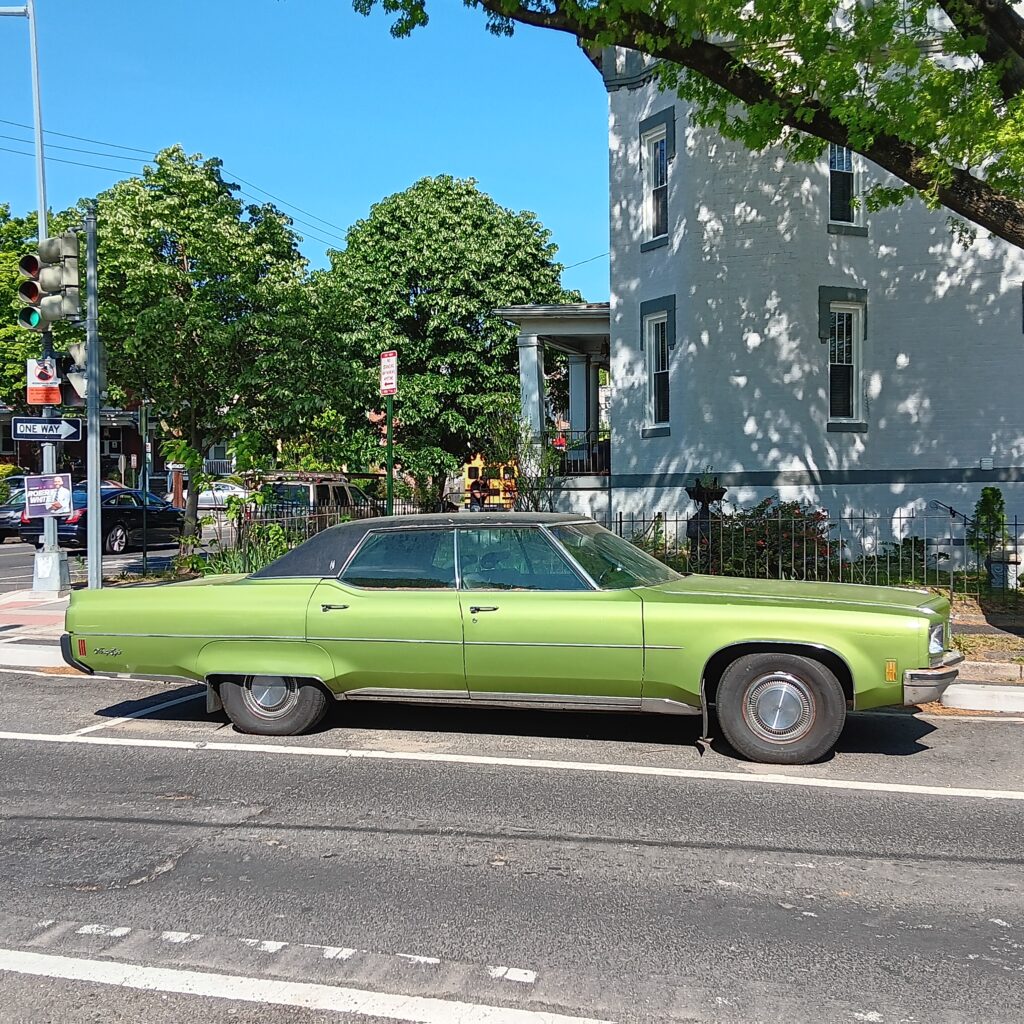captain’s log, NE DC, march 10, 2021: the helicopters are back with a vengeance. @PoPville
— Lauren (@lms2710) March 11, 2021
From Congress member Norton’s Office:
“Members of the Quiet Skies Caucus (QSC) sent a letter, led by QSC Co-Chairs Congresswoman Eleanor Holmes Norton (D-DC) and Congressman Stephen F. Lynch (D-MA) and QSC Vice Chairs Congressman Mike Quigley (IL-05) and Congressman Tom Suozzi (D-NY), to Federal Aviation Administration (FAA) Administrator Steve Dickson expressing their concerns over the FAA’s nationwide survey about aircraft noise annoyance. The letter points out that the noise metrics are outdated and do not accurately reflect the level of disruption caused by aircraft noise.
“These metrics are the very foundation of the FAA’s understanding of aircraft noise in the United States,” the members wrote. “If these metrics are not reliable, that calls into question the FAA’s entire framework of regulations and programs to reduce aircraft noise. It also suggests the FAA may not be doing enough because, to date, it has not understood the true scope of the problem.”
“We continue to receive complaints about interrupted sleep, disruption of business and economic activities, shaking homes, and the effect on youth development and education,” Norton said. “Furthermore, the FAA’s view that community noise concerns are solely an aviation industry issue is not only inadequate, but false. The FAA has a responsibility to help reduce and mitigate noise in impacted communities, and the FAA’s failure to recognize these concerns speaks volumes about why our communities feel slighted and shows a lack of willingness to make the necessary improvements.”
“The FAA’s report is long overdue and demonstrates the severe impact airplane noise has on communities,” said Rep. Lynch. “Despite my extreme displeasure with the FAA’s lack of effort to address this issue over the years, and despite their unwillingness to listen to public concerns, I am hopeful that this will lead to meaningful action. I will continue to fight to hold the FAA accountable to ensure the communities in and around my district do not have to needlessly endure constant, debilitating airplane noise.”
“The release of the FAA’s report was long overdue and demonstrates that the impacts of airplane noise are even more significant than previously known,” said Congressman Quigley. “I have spent years pressing the FAA for a serious, comprehensive response to the concerns of residents around O’Hare and other airports across the country, and the results of Neighborhood Environmental Survey underscore just how important this is. I am committed to fighting for my constituents until we get clear answers and a workable, long-term solutions from the FAA.”
“The FAA’s Neighborhood Environmental Survey tell us what we already knew loud and clear – our communities are ravaged by aircraft noise,” said Congressman Suozzi. “I hope the FAA has learned that they must collect and release data on noise complaints far more regularly so we can engage in effective policy solutions like reevaluating alternative metrics to the current DNL 65 average.”
The letter posed several specific questions and asked for a response in writing within 60 days. The full letter is below.
Dear Administrator Dickson:
As members of the Quiet Skies Caucus, we have deep concerns regarding the results of the Federal Aviation Administration’s (FAA’s) nationwide survey about aircraft noise annoyance. The results show clearly that the Day-Night Sound Level (DNL) and corresponding Schultz Curve created in the 1970s have outlived their usefulness–people are far more annoyed by aircraft noise than the Schultz Curve predicts. This validates the reports about aircraft noise we have been hearing from our constituents for years and requires the FAA to take aircraft noise more seriously than it has thus far.
After years of delay, the FAA has finally released the results of its Neighborhood Environmental Survey and issued a Federal Register Notice to seek comments on the survey results from the public. Fundamentally, the survey results demonstrate that the method the FAA uses to measure aircraft noise is deeply flawed. Even the FAA acknowledges that, “Compared with the existing Schultz Curve, the new National Curve shows a substantial increase in the percentage of people who are highly annoyed by aircraft noise over the entire range of aircraft noise levels considered, including at lower noise levels.”[1] These metrics are the very foundation of the FAA’s understanding of aircraft noise in the United States. If these metrics are not reliable, that calls into question the FAA’s entire framework of regulations and programs to reduce aircraft noise. It also suggests the FAA may not be doing enough because, to date, it has not understood the true scope of the problem.
This data, which has been in the FAA’s possession for years, contradicts the report the FAA provided to Congress on April 14, 2020, on its findings pursuant to Sections 188 and 173 of the FAA Reauthorization Act of 2018 (P.L. 115-254). That law required the FAA to “evaluate alternative metrics to the current average day-night level standard, such as the use of actual noise sampling and other methods, to address community airplane noise concerns.” In a letter many of us sent to you on September 23, 2020, we noted that the FAA’s cursory, inadequate report issued pursuant to that law failed to properly evaluate well-respected and widely used alternatives to DNL, contained inaccurate comparisons of DNL to those alternatives, did not analyze any complaint data and lacked scientific nuance. Instead of a robust analysis, Congress was offered excuses such as, “No single noise metric can cover all situations.”[2] That letter insisted that “the FAA return to the drawing board and meaningfully evaluate alternative metrics to the current DNL 65 average, not just dismiss or ignore them, and include the potential use of such metrics in the United States.” We also sought formal responses to the questions in the appended Citizens’ Response Report, a Technical Report to the FAA’s April 2020 Report on Alternative Noise Metrics (Reauthorization Act of 2018, Sections 173 and 188). We have not received responses.
Though the FAA finally released the Neighborhood Environmental Study, the data is from 2015-2016, which means that it tells us what people were experiencing six years ago. This is an unacceptable lag time between data collection and publication. The FAA must collect and release data on noise complaints and annoyance levels on a regular basis if we are to create and implement effective policy solutions.
Furthermore, we appreciate that the FAA solicited comments from the public on factors that may be contributing to the heightened annoyance levels, but we hope this is the first step toward deeper engagement with affected communities. Congress provided $5 million to increase the FAA’s community engagement capacity in the report accompanying the fiscal year 2021 Transportation, Housing and Urban Development, and Related Agencies Appropriations bill. This funding should provide the FAA with the resources it needs to understand the nuances of aircraft noise disturbances in different communities across the country and to bring new energy to tackling this problem in a collaborative fashion.
We request that you provide a written response to the following questions by May 10, 2021, and include this letter in the comments to the Neighborhood Environmental Survey:
Does the FAA plan to reconsider its use of DNL as its core aircraft noise metric?
Does the FAA plan to reconsider the 65 DNL level as the appropriate sound threshold for “significant” aircraft noise?
The report accompanying the FY 21 Transportation, Housing and Urban Development, and Related Agencies Appropriations bill provided an increase of $5 million for the FAA “to hire additional staff to increase the FAA’s community engagement capacity, including participating in community roundtables and meetings with local officials, for contractor support to make more data about aircraft positions and altitude publicly available, to prepare air traffic histories and analyses, and to conduct environmental reviews.” What is the status of hiring these new community engagement staff?
Now that this survey data has been released, what are the next steps that FAA plans to take?
Does the FAA plan to conduct additional studies on aircraft noise in the near future?
What data related to aircraft noise does the FAA collect on an ongoing basis? Is this data accessible to the public? If so, where?“
Recent Stories

Ed. Note: If this was you, please email [email protected] so I can put you in touch with OP. “Dear PoPville, Where: Outside of Mi Vida on 14th St When: Tuesday…

Good news, D.C. area. You can save money on your next home cleaning with Well-Paid Maids. It’s easy!
We offer a discount when you set up recurring cleans — and the discounts just increased this week!
For weekly cleans, get $30 off each cleaning.

Potomac Harmony is Back! Following a gap year of competing, then virtual rehearsals during the pandemic, followed by the well-earned retirement of our long-term director, a year of a director search, Potomac Harmony hit the regional contest stage in Concord, North Carolina in March for the first time since 2018! It was exhilarating, reaffirming, and rewarding!
The chorus hit all of its goals, the biggest of which was to have fun and sing our best on contest stage — we did both! Because we earned a score over 400 points, our new Director, Allison Lynskey, was awarded the Novice Director award, photo above. Additionally, one of our charter members, Jackie Bottash, was nominated for and honored with the Leadership Excellence award. It was a celebratory weekend!
What’s next? So much! We now look forward to upcoming performances, growing our membership, and expanding our musical product with new arrangements and an education component each week. It’s an exciting time to be part of this ever-growing ensemble!
St Mary Armenian Church Annual Spring Food Festival
Come hungry and leave happy! Experience culture, community, and cuisine all in one place. See you at the festival!!!!
Comedy Cabaret
Kick up your heels at Bad Medicine’s COMEDY CABARET extravaganza at the DC Improv Comedy Club on Tuesday, May 21st. Revel in the sights and sounds of this entertaining musical revue, with songs, dance and sketch comedy that will have






